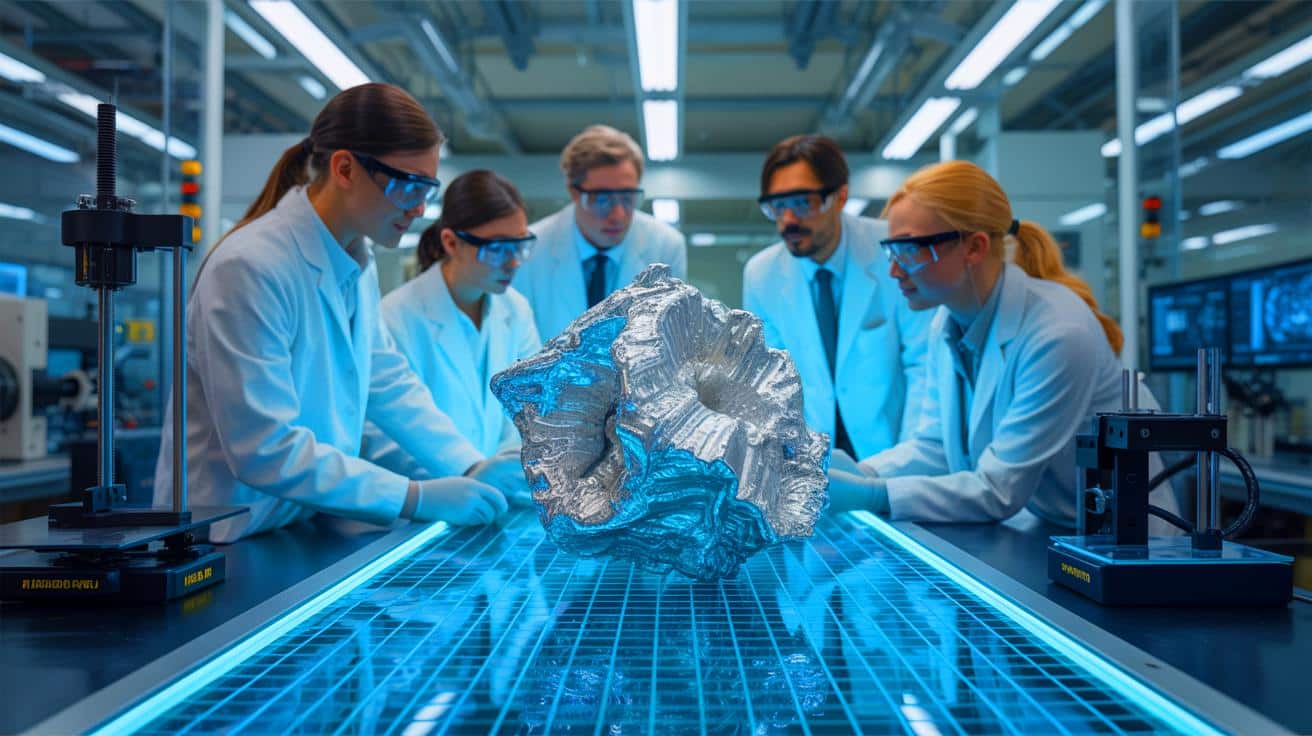News, investigations, and analysis — our top stories every morning to start your day right.
Researchers at MIT have unveiled a groundbreaking advancement in materials engineering: a new aluminum alloy that is five times stronger than conventionally manufactured aluminum. This innovation was made possible through cutting-edge machine learning techniques that drastically reduced the time and resources required to identify optimal material compositions. By evaluating only 40 potential combinations, the team successfully developed a high-strength, printable aluminum alloy that can withstand extreme temperatures. This alloy has the potential to revolutionize industries such as transportation and aerospace by providing a lighter, more cost-effective alternative to traditional materials like titanium.
In a remarkable leap forward, MIT researchers have utilized machine learning to streamline the development of high-strength aluminum alloys. Traditional methods would have necessitated simulating over a million possible material combinations. However, through the innovative use of machine learning, the team evaluated just 40 compositions to pinpoint the ideal mix for their printable alloy. This approach not only saved time but also unlocked unprecedented material properties.
Mohadeseh Taheri-Mousavi, who led the research as a postdoctoral fellow at MIT, emphasized the potential energy savings for the transportation industry. “If we can use lighter, high-strength material, this would save a considerable amount of energy,” she noted. The new 3D printing method delivers aluminum alloys with significantly enhanced strength compared to traditional manufacturing techniques, offering a promising avenue for energy-efficient applications.
“This Magnetism Shouldn’t Exist”: Scientists Uncover a Brand-New Force That Could Boost Computer Memory by Orders of Magnitude
The newly developed printable aluminum alloy holds promise for a wide array of applications. Researchers envision its use in producing lightweight, temperature-resistant components such as fan blades for jet engines. Traditionally, these components are cast from heavier and more expensive materials like titanium. The ability to 3D print complex geometries not only conserves material but also facilitates unique design possibilities.
John Hart, head of MIT’s Department of Mechanical Engineering, highlighted potential applications in advanced vacuum pumps, high-end automobiles, and cooling devices for data centers. The study, published in Advanced Materials, details the alloy’s development using a hybrid computational approach, which included phase diagram calculations and Bayesian optimization algorithms. The resulting alloy demonstrates a tensile strength 50% higher than the best-known benchmark printable aluminum alloy.
“It’s a Fuel Revolution!”: Coca-Cola and Seawater Power New Cars in Unbelievable Breakthrough That Could Change Everything
The team’s choice to employ 3D printing over traditional casting methods marks a significant shift in metal manufacturing. Casting involves pouring molten aluminum into molds, which can lead to larger precipitates and weakened material properties due to prolonged cooling times. 3D printing, on the other hand, enables rapid solidification, resulting in smaller precipitates and stronger materials.
This additive manufacturing process not only enhances the material’s mechanical properties but also offers flexibility in design and production. With the ability to produce complex shapes and reduce waste, 3D printing presents a sustainable and efficient alternative for fabricating high-performance alloys.
“Burying Poison for 1 Million Years Is Not a Solution”: MIT’s Nuclear Waste Model Ignites Global Ethics Firestorm
The development of this high-strength aluminum alloy signifies a potential turning point in material science and engineering. By leveraging advanced computational techniques and machine learning, researchers have set a new standard for alloy development. The integration of these technologies paves the way for the creation of materials with tailored properties that meet specific industrial needs.
This breakthrough raises important questions about the future of materials engineering. How might further advancements in machine learning and additive manufacturing reshape industries reliant on heavy, costly materials? The implications extend beyond aerospace and transportation, hinting at transformative possibilities across sectors such as construction, electronics, and beyond.
As the field of materials science continues to evolve, the collaborative efforts of researchers, engineers, and technologists will be crucial in harnessing new capabilities to address global challenges. The development of this innovative aluminum alloy is just the beginning of what promises to be a dynamic era in material engineering. What other groundbreaking advancements can we expect on the horizon as technology and science converge?
Did you like it? 4.4/5 (22)
News, investigations, and analysis — our top stories every morning to start your day right.
Eirwen Williams is a Brussels-based journalist at Energy Reporters, specializing in European energy policy, market trends, technological innovation, and energy security. Trained in journalism through a renowned program in New York, he examines how nations and industries are navigating the continent’s energy transition. With a focus on the forces driving change, his reporting highlights the interplay between regulation, infrastructure, and new technologies shaping Europe’s energy future. Contact: [email protected]
Wow, this could really change the game for aerospace! 🚀
Wow, this is amazing! Could this alloy also be used in the construction of buildings to make them lighter? 🏗️
News, investigations, and analysis — our top stories every morning to start your day right.
News, investigations, and analysis — our top stories every morning to start your day right.
Type above and press Enter to search. Press Esc to cancel.











